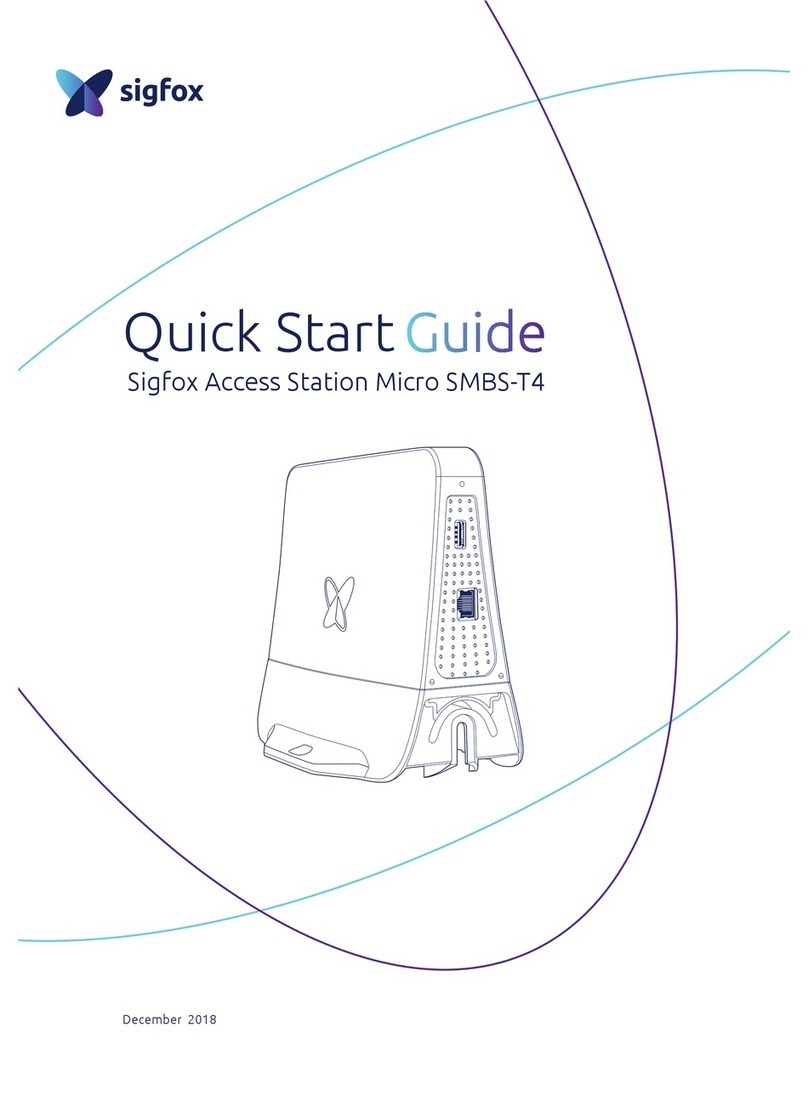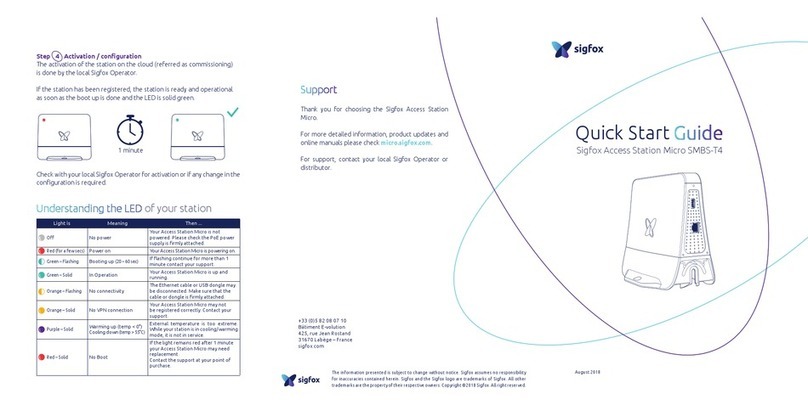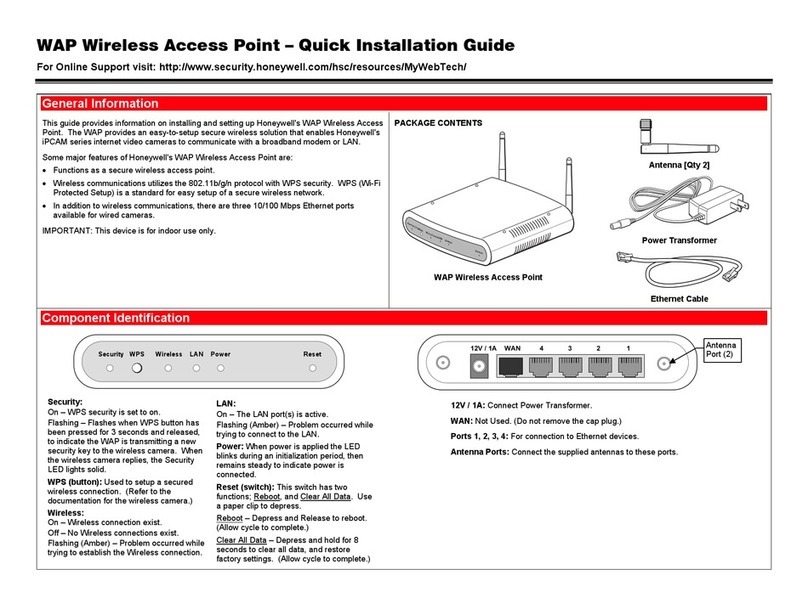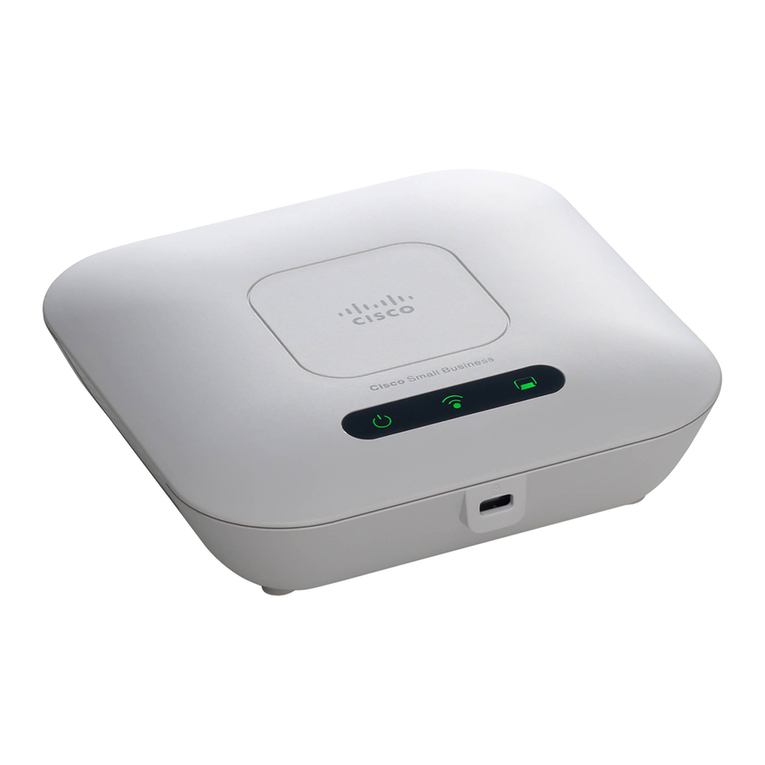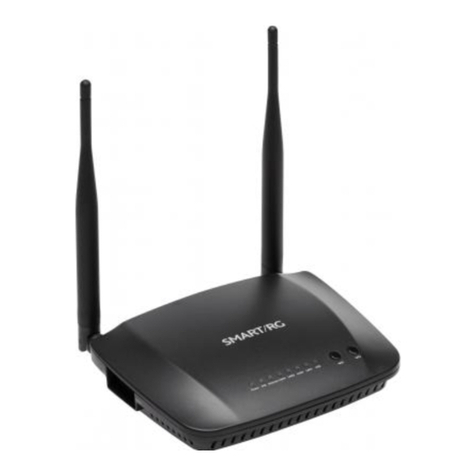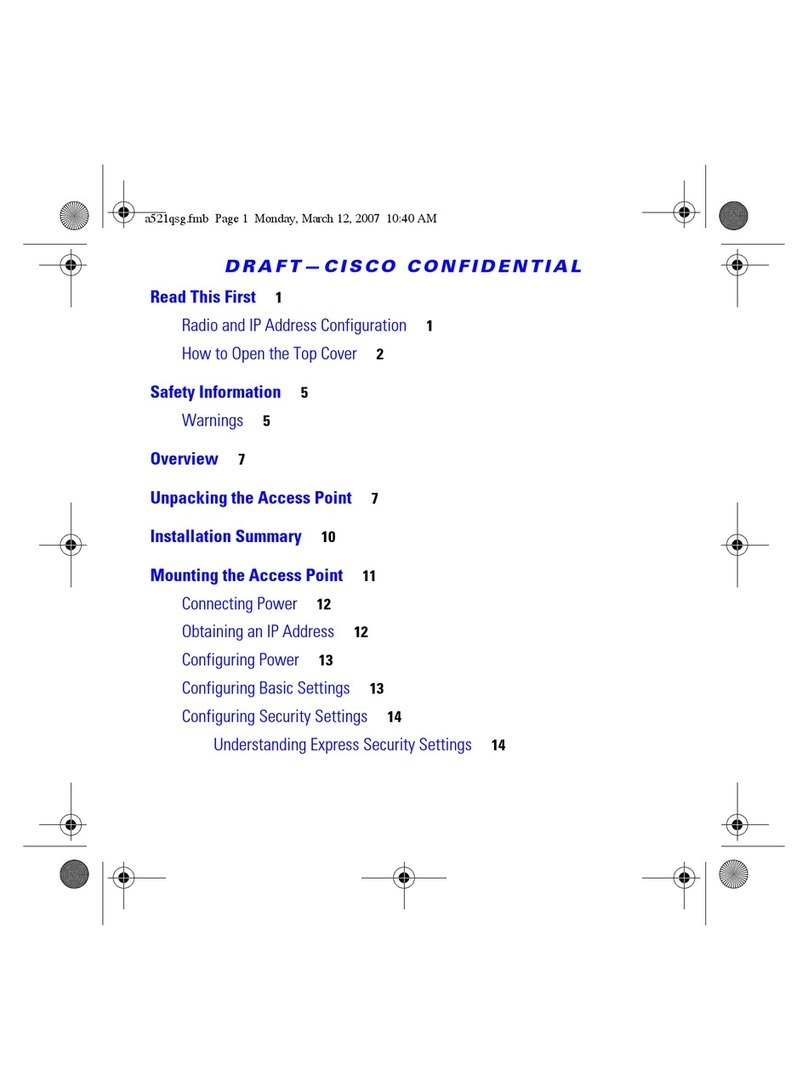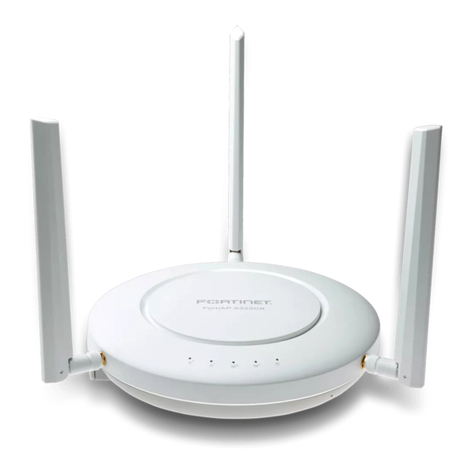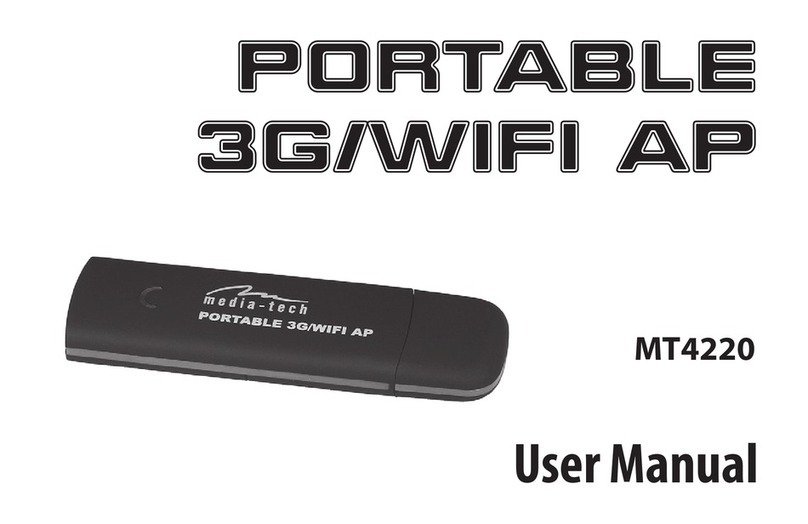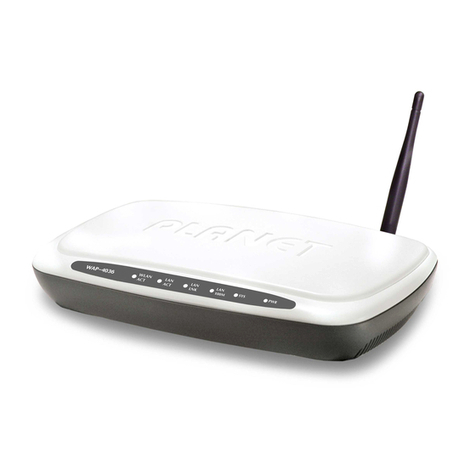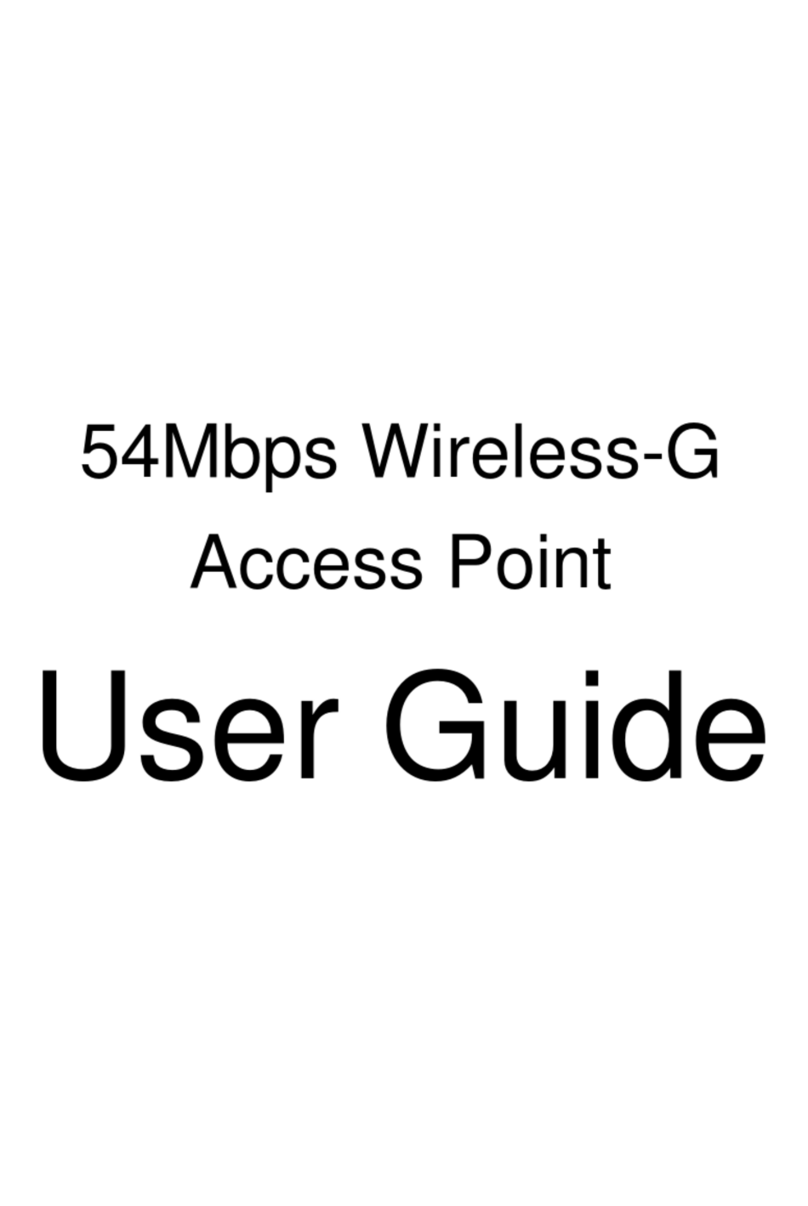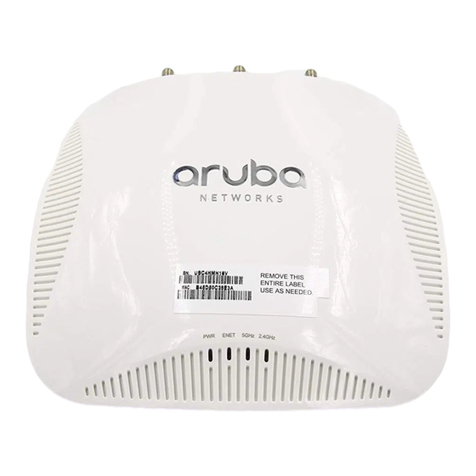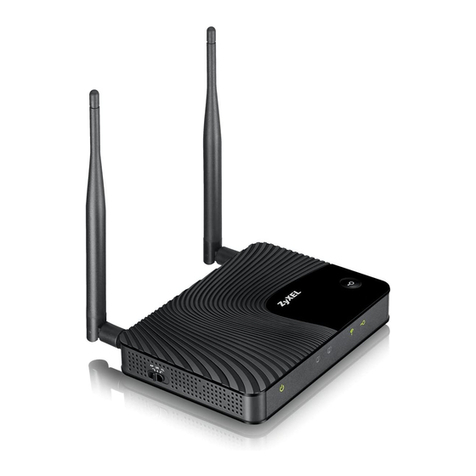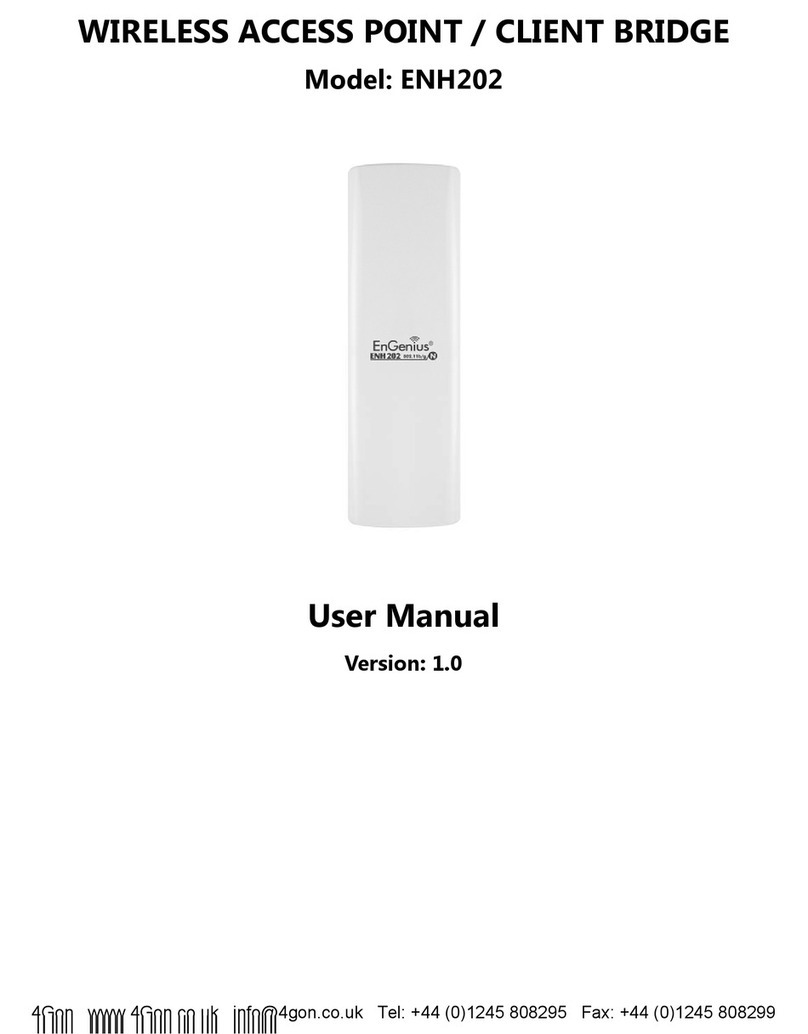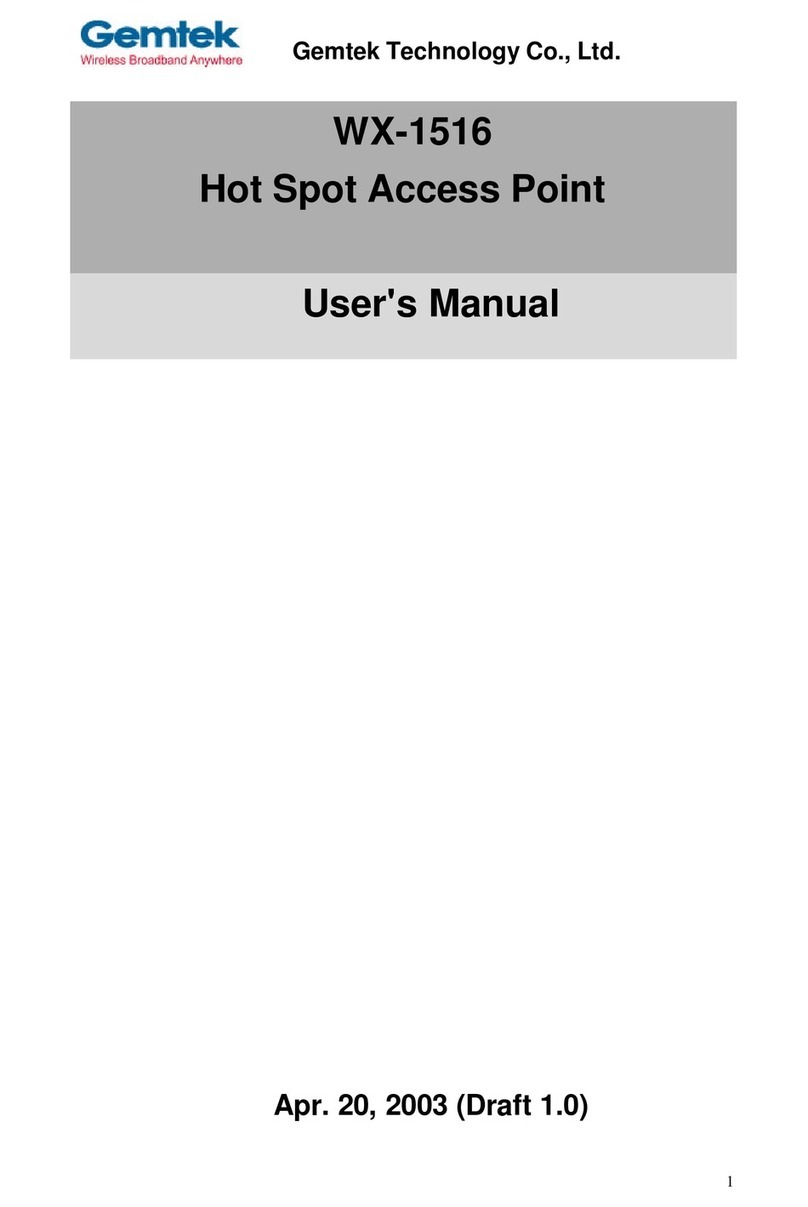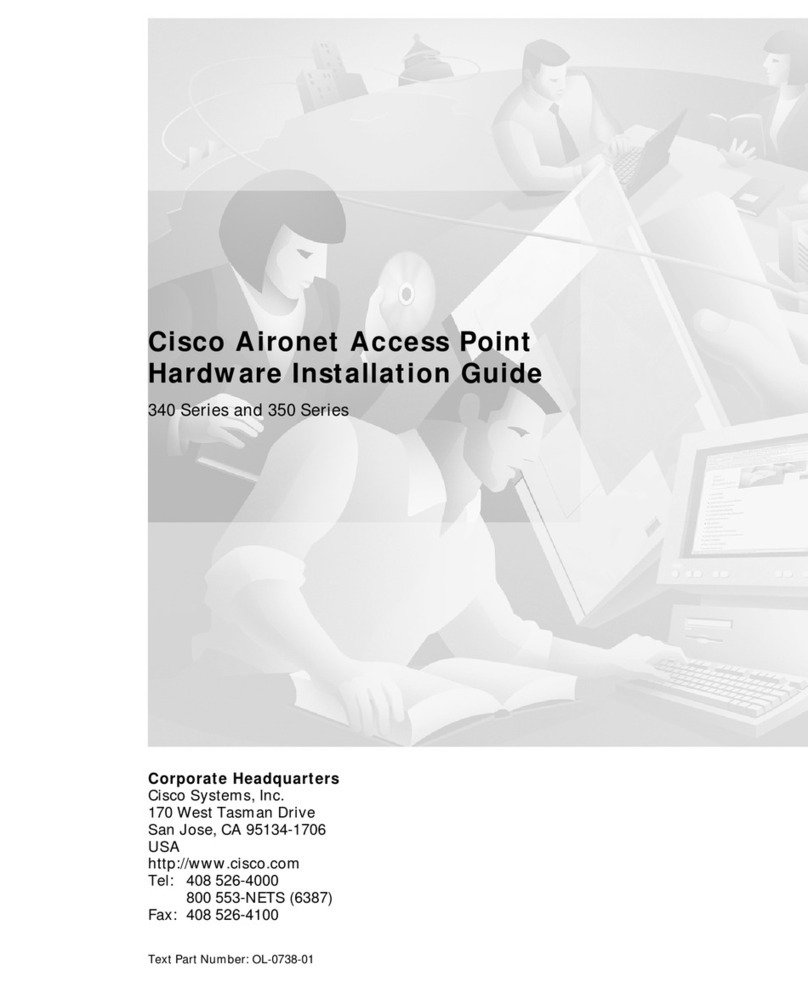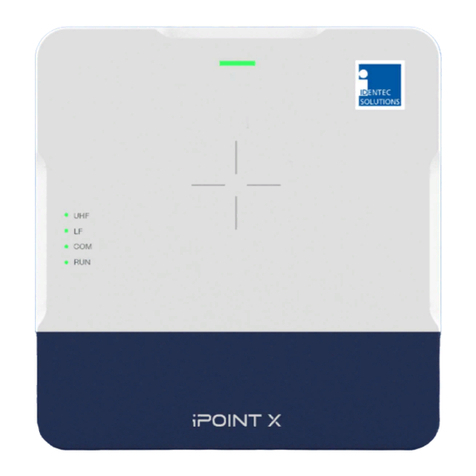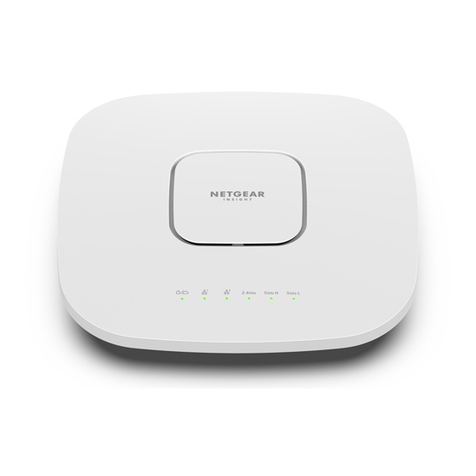Sigfox Sigfox AccessStation Micro SMBS-T4 User manual

SMBS-T4-PROD-MAN v1
Note: Only the last version of this document available on the Sigfox technical system documentation is official and applicable. This
document is confidential and is the property of Sigfox. It shall not be copied and / or disclosed to third parties, in any form without
Sigfox written permission.
Sigfox Access
Station Micro
SMBS-T4
Product manual
February 2020

2
Contents
1. Product presentation ...................................................................................................................3
2. Network overview.........................................................................................................................3
3. Package contents.........................................................................................................................4
4. Installation recommendation ......................................................................................................5
4.1. Coexistence with another RF equipment...............................................................................5
4.1. Access Station Orientation ....................................................................................................6
4.2. Access Station Mounting .......................................................................................................6
4.3. Sealing Cover ........................................................................................................................7
4.4. Site selection .........................................................................................................................7
4.4.1. Indoor: ...............................................................................................................................7
4.4.2. Outdoor:.............................................................................................................................9
5. Connection and commissioning...............................................................................................10
5.1. Interface...............................................................................................................................10
5.2. Power supply .......................................................................................................................10
5.2.1. Input requirement ............................................................................................................10
5.2.2. Cable length ....................................................................................................................10
5.2.3. Power consumption.........................................................................................................11
5.3. Connectivity .........................................................................................................................12
5.3.1. Ethernet connectivity.......................................................................................................12
5.3.2. Cellular connectivity ........................................................................................................13
5.4. Commissioning ....................................................................................................................13
5.5. LED status ...........................................................................................................................14
6. Annexes.......................................................................................................................................15
6.1. Labels ..................................................................................................................................15
6.1.1. Product ID........................................................................................................................15
6.1.2. Compliances....................................................................................................................15
6.2. Specifications.......................................................................................................................16
Acronyms
Acronyms/abbreviations
Meanings
AC / DC
alternating / direct current
DC (radio access mode)
Duty Cycle
DL
Downlink
ETH
Ethernet
FH
Frequency hoping
ISM
Industrial, Scientific and Medical
LBT
Listen before talk
PoE
Power over internet
RF
Radio frequency
RX
Reception mode
SDR
Software-Defined Radio
TX
Emission mode
UL
Uplink

3
1.Product presentation
Sigfox Access Stations operate on a specific frequency bandwidth used by sigfox
devices. They perform mainly receiving operations (uplink), but are also able to
transmit information by doing downlink operations upon device request
The Access Stations Micro include a complete system described in the Network
overview below.
Sigfox Access Station Micro series are ultra-wide range, high linearity transceivers
units and feature first class performance radio and innovative software defined
radio processing, for use in Ultra Narrow Band Machine-To-Machine wireless
communication systems.
Sigfox Access Station Micro system has a pre-set receiver frequency depending
on the radio regulation applicable in the region. This choice is made by a specific
software configuration.
2.Network overview
Connectivity
via internet
Base station
Sigfox
Cloud
Device
Customer App

4
3.Package contents
•Sigfox Access Station Micro SBMS-T4
•Mounting kits (2 ties and 2 set of screws and anchors)
•PoE DC injector
•Ethernet cable CAT6 1.5m
•Power adaptor 110/220V AC to 24V DC 18W
•Quick Start Guide / Safety Notice
Accessories available separately:
•Sealing cover
•USB cellular dongle containing a specific firmware compatible with Sigfox
Access Station:
Cellular Type
Model
Firmware
Zone
3G
MS2131i-8-SIG
21.751.11.00.00
-
4G / 3G
MS2372h-153
21.327.07.00.00
EMEA
MS2372h-517
21.328.01.06.00
America
MS2372h-607
21.328.01.07.00
Asia
Note: Compatibility with other hardware or firmware references is not guaranteed by Sigfox.

5
4.Installation recommendation
Access Station Micro has been developed for indoor and outdoor operation.
For temporary location, the base station is perfectly stable sitting on a table, a desk
or a shelf. For permanent installation, we recommend using the mounting kits for
long-term fixation.
For outdoor operation, the adjunction of sealing cover is mandatory to ensure
waterproofness (see §4.4).
4.1. Coexistence with another RF equipment
As any radio equipment, Access station micro should be installed with proper
decoupling precaution versus other radio transmitters. Should the quantified
decoupling recommendation listed below be infringed, the access station micro
would enter degraded operation, including coverage reduction.
Decoupling protection is usually expressed in dB, however for practical reasons,
this guide presents decoupling recommendation in terms of physical separation.
Co-location of access station micro on Telco site or with third party SRD/ISM
systems operating on the same band is forbidden.
Regardless the type of installation, the base station must be installed away from
obstacles possibly altering the reception, and so that it must not receive more
than -20dBm signals from 0 to 821MHz and from 925MHz to 2.5GHz.
General recommendation for outdoor installation would be to not place the
Access Station Micro in direct line of sight of broadcasting equipment or cellular
station.
For indoor installation, place the station in a different room as other RF
equipment, when possible install the station on a different floor.
Use of cell phones in direct vicinity of the Access Station Micro will not affect
neither its range, nor its quality of service.
In case of third party equipment in close proximity, with line of sight visibility and
horizontal alignment, following physical separation is recommended:
System type
Minimum physical separation
indoor
outdoor
100KW Broadcast (FM or digital TV DBV-T)
1000m
3000m
Cellular macrocell (N x 2kW panel)
100m
300m
Cellular pico station
2m
N/A
868-925 MHz SRD / ISM equipment
100m
1000m
Wi-Fi
1m
1m

6
4.1. Access Station Orientation
The table below describes the preferred orientation to maximize the radio
performances of the access station:
Preference
order
Orientation
Illustration
1
Standing up
2
Upside down
3
Aside
4.2. Access Station Mounting
The following table describes the different mounting options offered with the kit
included in the package:
Wall Mounting
Pole Mounting
Kit
•2 screws 4.5x30mm & anchors
for plaster wall
•2 screws 5 x 30mm & anchors
for concrete wall
2 cable ties included
Illustration
Requirements
A drill and/or a screwdriver
Pole or mast recommended
diameter:
•Minimum 20mm
•Maximum 60mm

7
4.3. Sealing Cover
To install the Access station micro outside, or in an environment exposed to high
humidity, dust, or even to prevent thief, you must use the sealing cover to protect
the connectors and theUSB dongle if used.The sealing cover provides an Ingress
Protection IP65.
Note: Ethernet cabling must be Cat5e or above, suitable for outdoor use (with
drain wire). For more details in cable types and maximum length see the power
supply § 5.2
4.4. Site selection
Radio performance will depend on site configuration. Whatever the type of
installation, the station should be clear of massive obstacles or metallic surface
within 1m, since possibly altering operation.
4.4.1. Indoor:
If the station is to cover a building on several floors, it is recommended to place it
mid-height of the building, but generally in the upper part of the room or area to
cover. The station should not be used within a metallic closet or in a technical
room with metallic door.
To ensure a maximum of performance, you must ensure to:
•Avoid placing the Sigfox devices in the same room as the station.

8
•Avoid installation on the last floor in case of cellular BS on the roof and away
from windows to reduce RF interferers from cellular/broadcasters”
Note: When installed vertically on a wall, the connector must be facing downward.

9
4.4.2. Outdoor:
For outdoor deployment, it is recommended to place the Access Station Micro
above, facing and in the periphery of the connected devices for best result.

10
5.Connection and commissioning
5.1. Interface
5.2. Power supply
The station is powered with a passive PoE. The PoE splitter is integrated in the
station. The power is conveyed from the AC/DC adapter through the DC injector
and the ETH cable (all provided in the box).
Customers may need to re-confirm that the whole system complies with the EMC
directives.
5.2.1. Input requirement
Power supply: PoE (passive) 24V DC and 0.75A
Nominal voltage range: 11V DC to 26V DC from the supplied PoE injector
Station minimum input voltage: 10V DC
Max input current: 1A
Injector DC connector: 5.5mm x 2.1mm
Note : The station cannot be powered with IEEE 802.3x active PoE
routers/injectors.
5.2.2. Cable length
If using another ethernet cable than the one provided, select a cable CAT5e or
above, shielded F/FTP, SF/UTP, SF/FTP.
Ethernet cable length depends on the gauge size and station consumption.
For guidance (AWG22 to AWG26):
Conditions
Output power supply
max length
All
20Vdc < V < 26Vdc
40m
Temp always > 0°C
(no heating required)
20Vdc < V < 26Vdc
60m
USB port
Ethernet port
Led

11
Standard installation (24v):
5.2.3. Power consumption
The power consumption depends on the station mode, use of cellular dongle and
external temperatures.
Typical: 2.3W (RX mode) or 4W (TX mode) with Ethernet connection.
Average power consumption with warm up mode: 4.8W
Peak consumption: 7.5W with heating mode
Heating mode: 6.3W (temperature <0°C)
Use of cellular dongle for connectivity: 5W (max)
Maximum: 12.5W (cellular + warm up mode + TX mode)
Cable length < 40m
(without heating,
length < 60m)

12
5.3. Connectivity
The Access Station Micro needs Internet access to operate.
It can be connected via Ethernet cable (RJ45 port on PoE injector) or Cellular USB
dongle (USB port on station).
When both connections are used to improve link robustness, the Ethernet one is
automatically set as primary and Cellular is set as secondary backup.
5.3.1. Ethernet connectivity
Ethernet connection of the PoE injector can be provided by DSL modem, satellite
modem, any kind of backhaul connection or private LAN.
In case of private LAN or direct Backhaul connection, the host network should
receive proper configuration to allow the IP communication between Sigfox Access
station and Sigfox Cloud.
Performance requirement:
Minimum Throughput: 512 Kbit/s (DL) and 128 Kbit/s (UL)
Maximum latency: 2 s
The following table lists communication ports (inbound and outbound) that must be
open on the host network firewall:
Port
Connection
protocol
Purpose
Destination IP
53
UDP
DNS
IP provided by DHCP
lease
443
TCP
Communication with Sigfox Cloud
185.110.96.0/22
1194
UDP
Separate VPN
185.110.96.0/22
500
UDP
Separate VPN
185.110.96.0/22
4500
UDP
Separate VPN
185.110.96.0/22
For more details, please contact your Sigfox Operator.

13
5.3.2. Cellular connectivity
As an alternative or backup, connectivity can be provided with a compatible 3G
or 4G USB dongle (see §3 Package contents) and SIM card.
Before the first connection, the cellular connectivity must be configured locally
with the Access Station Utility application according to your SIM card
subscription parameters.
5.4. Commissioning
Commissioning of the station is done online by the Sigfox Operator via the
Backend interface.
Pre-commissioning, modification of network settings and registering site location
can be done with the Access Station Utility application.
Access Station Utility in available for download from Google Pay to suitable
phones or tablets.
https://play.google.com/store/apps/details?id=com.sigfox.accessstation.utility
Once installed, connect the device to the Sigfox Access Station Micro (powered)
with a USB cable and provide the required information.

14
5.5. LED status
LED
Meaning
Troubleshooting
Off
No power
Check power supply, injector and Ethernet
cable
Red (for ≈30 secs)
Red –Solid (> 1
minute)
Power on
Hardware issue
If the light remains red after 2 minutes, try to
unplug and plug again the station. If the
problem persists, contact your support.
Green –Flashing (30 s
to 1 min)
Boot up
If the light remains flashing green after 1
minute, try to unplug and plug again the station.
If the problem persists, contact your support.
Orange –Flashing
Establishing connectivity
IP not allocated
If the light remains flashing orange after 1
minute, check network connection. Check
DHCP server and IT configuration
Orange
Establishing VPN
connection
If the light remains orange after 1 minute, check
DNS servers and policy. Check ICMP policy
/NTP resolution or remove proxy settings.
Check HTTPS connection policy or certificate.
Authorise VPN/IPSec policy
Green –solid
All OK
Purple –solid
Warming up (temp < 1°)
–not in service (max 10
min)
Cooling down (temp >
70°C)
If a cellular USB dongle is used, the led on the USB dongle should be lit or flashing.
Please refer to the USB dongle guide.

15
6.Annexes
6.1. Labels
6.1.1. Product ID
GTIN/EAN : 3665306000207
6.1.2. Compliances
Certifications for other countries or regions are ongoing. New certifications will be
added over time, without product modification.
Once the certification has been validated for a country, the product will be
compliant, and the label will be updated if necessary.
Check the lasted version of the Safety notice & Product certifications available
online for up to date information.
https://support.sigfox.com/docs/smbs-t4-notice
sigfox
425 rue Jean Rostand
31670 Labège, France
www.sigfox.com
Designed in France
Assembled in Spain
Model : SMBS-T4
Input : 12V / 5.4A
S/N : 00003421
OF number :

16
6.2. Specifications
RADIO CHARACTERISTICS
Standard
Sigfox Ultra Narrow Band Protocol for M2M and IoT
Max range of operating frequencies *
865 to 928 MHz
Receiver Sensitivity
-132dBm @ 100bps / -124dBm @ 600bps
Data Rate and Modulation
100 bps D-BPSK (UL) 600 bps GFSK (DL)
Max Transmit Power * (EIRP)
23 dBm ± 1dB
Antenna
Integrated. Typ. 0dBi, max 3dBi.
(*)Note: The maximum frequency range and power setting will vary by channel and according to country regulations.
Refer to the regulatory groups table for more details.
Regulatory groups for SMBS-T4
REGULATORY
GROUP
RADIO
ACCESS
MODE
OPERATING BAND
MAX OUTPUT
RADIATED
POWER
(EIRP)
COUNTRY
A
FH
915 - 928MHz
23dBm
AUSTRALIA
B
FH
902 - 907.5 & 915 -
928MHz
23dBm
BRAZIL
C
FH
915 - 928MHz
23dBm
CHILE
COLOMBIA
URUGUAY
E
DC 10%
869.4 - 869.65MHz
23dBm
EUROPE (EU)
KENYA
MAURITIUS
OMAN
SOUTH AFRICA
TUNISIA
TURKEY
UAE
H
FH
920 - 925MHz
23dBm
HONG KONG
I
DC 10%
865 - 867MHz
23dBm
INDIA
J
LBT
920.6 - 922.2MHz
23dBm
JAPAN
K
LBT
922.1 -923.4MHz
14dBm
SOUTH KOREA
M
FH
915 - 923MHz
23dBm
MALAYSIA
N
FH
920 - 928MHz
23dBm
NEW ZEALAND
P
FH
916 - 928MHz
23dBm
PERU
S
FH
920 - 925MHz
23dBm
SINGAPORE
T
FH
920 - 925MHz
23dBm
TAIWAN
U
FH
902 - 928MHz
23dBm
USA
CANADA
ARGENTINA
MEXICO
PANAMA
PUERTO RICO

17
MECHANICAL AND ENVIRONMENTAL
Product weight
450g (1 lb)
Operating temperatures
-20°C to +55°C
Storage temperatures
-30°C to +85°C
Robustness
MTBF 92,000 hours
Casing material
Plastic ASA/PC
Dimensions (in mm):
Sealing cover:
Other manuals for Sigfox AccessStation Micro SMBS-T4
2
This manual suits for next models
2
Table of contents
Other Sigfox Wireless Access Point manuals
